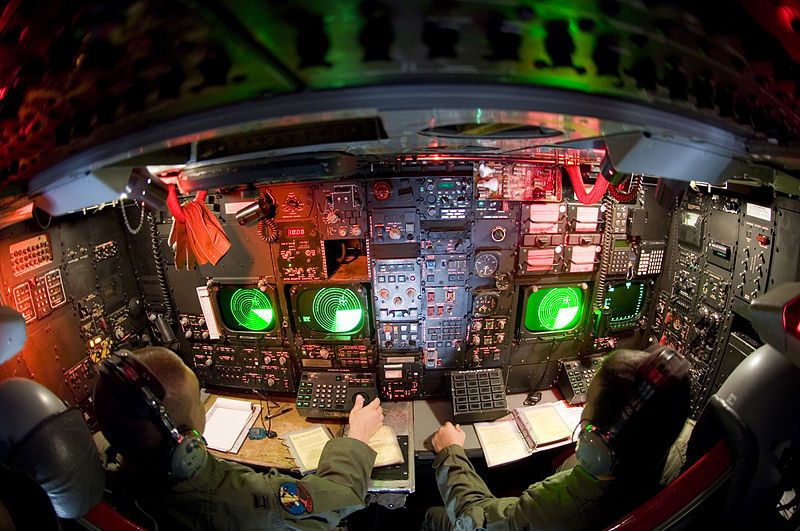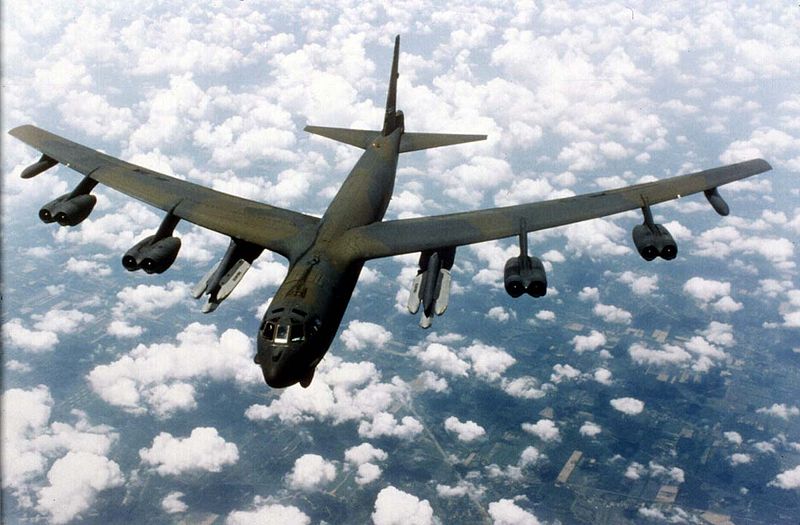For over six decades, the B-52 Stratofortress has been a symbol of American military might, dominating the skies with its unmatched range, payload capacity, and versatility. Known as the “strategic fortress” of the U.S. Air Force, the B-52 has played a pivotal role in countless missions, from Cold War deterrence to modern-day conflicts. Despite its long service history, there are many lesser-known aspects of this iconic bomber that continue to intrigue both military enthusiasts and aviation experts alike. Here are some of the most fascinating unknown facts about the B-52 Stratofortress.
1. Designed for Nuclear Warfare, Adapted for All
The B-52 was originally designed during the Cold War with one primary mission: to deliver nuclear weapons deep into enemy territory. Its enormous range and ability to carry nuclear payloads made it a cornerstone of the U.S. nuclear triad. However, over the years, the B-52 has been adapted for a wide range of missions, including conventional bombing, reconnaissance, and even maritime patrol. This adaptability has allowed the B-52 to remain relevant in an ever-changing military landscape.
2. A Bomber Built to Last
The longevity of the B-52 is nothing short of extraordinary. The first B-52 entered service in 1955, and remarkably, the aircraft is still in active duty today. The Air Force plans to keep the B-52 in service until at least 2050, which means some of these aircraft will have been flying for nearly a century. This is a testament to the robust design and continual upgrades that have kept the B-52 operational through multiple generations of technology.
3. A Master of Altitude
One of the B-52’s most impressive features is its ability to operate at a wide range of altitudes. The aircraft can fly at high altitudes, well above 50,000 feet, to avoid enemy radar and interceptors. Conversely, it can also perform low-altitude missions, skimming just a few hundred feet above the ground to evade detection. This versatility in altitude makes the B-52 a formidable asset in both strategic and tactical operations.

4. A Record-Setting Flight
In January 1962, a B-52 set a world record for the longest unrefueled flight by a jet aircraft. The flight, known as Operation “Lucky Lady III,” lasted 22 hours and covered 12,532 miles, circling the globe. This remarkable feat demonstrated the B-52’s unparalleled range and endurance, reinforcing its role as a global strike platform capable of reaching any target in the world.
5. A True Arsenal in the Sky
The B-52 can carry an astonishing amount of firepower. With a maximum payload capacity of 70,000 pounds, it can be equipped with a variety of munitions, including gravity bombs, cruise missiles, and precision-guided weapons. The B-52 can carry up to 20 air-launched cruise missiles (ALCMs), making it a key player in both conventional and nuclear strikes. Its ability to deliver such a massive and diverse array of weapons has earned the B-52 its nickname as an “arsenal in the sky.”
6. A Survivor of Enemy Fire
Despite its size and age, the B-52 has proven to be remarkably resilient in combat. During the Vietnam War, B-52s flew thousands of bombing missions, and while some were lost to enemy fire, many others survived significant damage and returned safely to base. The aircraft’s ability to absorb damage and keep flying has contributed to its legendary status within the Air Force.
7. The B-52’s Secret Electronic Warfare Capabilities
While the B-52 is known for its bombing prowess, it also has a lesser-known role in electronic warfare. The aircraft is equipped with advanced electronic countermeasures (ECM) systems designed to jam enemy radar and communications, making it difficult for adversaries to track or target the bomber. This electronic warfare capability enhances the B-52’s survivability and effectiveness in contested environments.

8. A Training Ground for Future Pilots
Given its long service life, the B-52 has been used to train countless pilots who have gone on to fly more modern aircraft. The experience gained from flying the B-52, with its unique handling characteristics and operational requirements, provides invaluable training for future generations of Air Force aviators. For many pilots, the B-52 represents a rite of passage, a link to the rich history of American airpower.
9. A Platform for Cutting-Edge Research
In addition to its combat roles, the B-52 has been used as a platform for various research and development projects. The aircraft has been involved in testing new weapons, avionics systems, and even hypersonic technologies. Its size and versatility make it an ideal testbed for experimental programs that push the boundaries of aviation technology.
10. The Future of the B-52: A New Lease on Life
Despite its age, the B-52 is set to receive significant upgrades that will keep it flying well into the 21st century. Plans are in place to re-engine the aircraft with more efficient and reliable engines, upgrade its avionics and communications systems, and enhance its weapons capabilities. These upgrades will ensure that the B-52 remains a key component of the U.S. Air Force’s strategic bomber fleet for decades to come.

Conclusion: The Enduring Legacy of the B-52
The B-52 Stratofortress is more than just a bomber; it is a symbol of American ingenuity, resilience, and power. Its unmatched service record, adaptability, and continued relevance in modern warfare are testaments to the aircraft’s timeless design. As it continues to serve the U.S. Air Force, the B-52 will undoubtedly add more chapters to its storied legacy, remaining a vital part of the nation’s defense for years to come.





